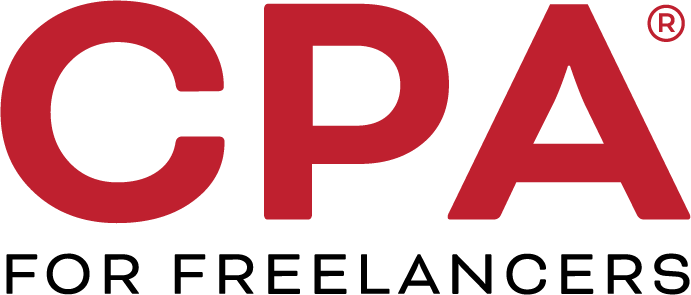In a sure sign that the end of the year is just around the corner, the Internal Revenue Service (IRS) announced cost‑of‑living adjustments for the dollar limitations for pension plans and other retirement-related items for tax year 2021. Here’s what freelancers should take note of from the irs.gov announcement:
- The income ranges for determining eligibility to make deductible contributions to traditional Individual Retirement Arrangements (IRAs), to contribute to Roth IRAs and to claim the Saver’s Credit all increased for 2021.
- You can deduct contributions to a traditional IRA if you meet certain conditions. However, if you are also covered by a retirement plan through an employer or your spouse is, your deduction may be reduced, or phased out, until it is eliminated, depending on your filing status and income.
If neither your nor your spouse is covered by a retirement plan at work, the following 2021 phase-outs of the deduction do not apply:
- For single taxpayers covered by a workplace retirement plan, the phase-out range is $66,000 to $76,000, up from $65,000 to $75,000.
- For married couples filing jointly, where the spouse making the IRA contribution is covered by a workplace retirement plan, the phase-out range is $105,000 to $125,000, up from $104,000 to $124,000.
- For an IRA contributor who is not covered by a workplace retirement plan and is married to someone who is covered, the deduction is phased out if the couple’s income is between $198,000 and $208,000, up from $196,000 and $206,000.
- For a married individual filing a separate return who is covered by a workplace retirement plan, the phase-out range is not subject to an annual cost-of-living adjustment and remains $0 to $10,000.
- The income limit for the Saver’s Credit (also known as the Retirement Savings Contributions Credit) for low- and moderate-income workers is $66,000 for married couples filing jointly, up from $65,000; $49,500 for heads of household, up from $48,750; and $33,000 for singles and married individuals filing separately, up from $32,500.
The income phase-out range for taxpayers making contributions to a Roth IRA is:
-
- $125,000 to $140,000 for singles and heads of household, up from
- $124,000 to $139,000. For married couples filing jointly, the income phase-out range is $198,000 to $208,000, up from $196,000 to $206,000.
- The phase-out range for a married individual filing a separate return who makes contributions to a Roth IRA is not subject to an annual cost-of-living adjustment and remains $0 to $10,000.
SEP IRA and Other Retirement Plan Limits for 2021
The IRS has increased 2021 contribution limits for SEP IRAs and Solo 401(k)s, so if you have one for your freelance business you can up your contribution maximum from $57,000 (in 2020) to $58,000 next year. If you are self-employed and don’t have a retirement plan set up, consider a SEP IRA or a Solo 401(k)—they allow you to contribute more than the annual $6,000 contribution that is allowed in a Traditional IRA or Roth IRA. For those 50 or older, there is also a $6,500 catch-up contribution amount allowing total contributions in 2021 of $64,500.
Other Retirement Plan Limits for 2021
The limit on contributions by employees who participate in 401(k), 403(b), most 457 plans, and the federal government’s Thrift Savings Plan remains unchanged at $19,500 in 2021. The catch-up contribution limit for employees aged 50 and over who participate in these plans remains unchanged at $6,500.
The limitation regarding SIMPLE retirement accounts remains unchanged at $13,500.
The limit on annual contributions to an IRA remains unchanged at $6,000. The additional catch-up contribution limit for individuals aged 50 and over is not subject to an annual cost-of-living adjustment and remains $1,000.
Don’t Qualify for a “Traditional” IRA—Try the Backdoor Option
Don’t worry about the name “Backdoor Roth IRA”—this type of retirement savings vehicle is still perfectly legal! A backdoor Roth IRA is not a standard retirement account but it is an authorized method by the IRS for high-income taxpayers to fund a Roth IRA.
This type of account could be beneficial to you if your income is higher than the maximum the IRS allows for regular Roth contributions. Backdoor Roth IRAs are usually traditional IRA accounts or 401(k)s converted to Roth IRAs, hence you “back door” your way around the usual income limits that restrict high income earners from contributing to Roth IRAs.
The benefit of a Roth IRA is that it lets taxpayers set money aside in a special retirement savings account. Your assets grow and can eventually be withdrawn, without incurring any income tax. The problem for freelancers and others who have a modified adjusted gross income in the higher six figures is that the IRS starts phasing out the amount you can contribute based on your tax filing status—until you can’t contribute at all.
Here’s where the work around comes in: Traditional IRAs don’t have these income limits and the IRS doesn’t have income limits that restrict who can convert a traditional IRA to Roth IRA. This makes the backdoor Roth IRA an attractive option for higher-income taxpayers. If you fall into one of the income categories below, you may want to consider the backdoor Roth IRA option, which excludes you from these limits:
- Roth IRA income limits: For 2021, if your modified adjusted gross income (MAGI) is higher than $140,000 if you’re single ($139,000 for 2020) or $208,000 if you’re married filing jointly ($206,000 for 2020 or qualifying widow or widower, you can’t contribute to a Roth IRA. These limits don’t apply to Roth IRA backdoor conversions.
- Roth IRA contribution limits: For 2020 and 2021, you can contribute $6,000 each year ($7,000, if you are age 50 or over) to a Roth IRA.
How to create a backdoor Roth IRA
There are several ways to create a backdoor Roth IRA—you may want to enlist the help of a financial professional if you aren’t comfortable doing it on your own :
- Contribute money to an existing traditional IRA and then roll over the funds to a Roth IRA account You can also roll over money once a year from an existing traditional IRA into a Roth IRA. There is no limit on it…you can roll over as much as you want.
- If you have one, you can convert your entire traditional IRA account to a Roth IRA account.
- You can make an after-tax contribution to a 401(k) plan and then roll it over to a Roth IRA.
Taxes May Still Apply to Your Backdoor Roth IRA
A couple of cons of this approach (at least in the short-term): An important point to keep in mind: you still need to pay taxes on any money in your traditional IRA if it hasn’t already been taxed—even if you convert it to a Roth IRA.
The IRS may even count the contribution as income, but the good news is, you don’t have to pay full taxes because a pro-rata rule applies. In addition, the funds you put into the Roth IRA are considered converted funds, not contributions, meaning they differ slightly from regular Roth IRA finds. You will have to wait five years to have penalty-free access to your funds if you’re under the age of 59½.
There are some key pros which you can also consider: There are no required minimum distributions (RMDs), which means account balances can see tax-deferred growth for your lifetime. Also, unlike traditional IRA distributions, those from a backdoor Roth are not taxable.
Start Planning for Your Freelance Retirement Now—With or Without a Backdoor IRA Option
No matter whether you want (or need) to create a backdoor Roth IRA option for yourself or not, planning for your freelance retirement is critical. Use the information above to make a smart decision about IRAs and other savings vehicles so you can start funding your future financial security today!


